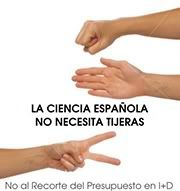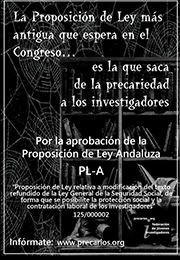 Durante los días 18 a 22 de octubre he asistido en Amberes (Bélgica) a la Conferencia sobre Quimiometría en Química Analítica 2010 (CAC2010), en la que hemos presentado un póster sobre MODELADO DEL FRACCIONAMIENTO QUÍMICO DE METALES PESADOS EN SUELOS ESPAÑOLES MEDIANTE ANALISIS EN COMPONENTES PRINCIPALES EN DOS Y TRES DIMENSIONES.
Durante los días 18 a 22 de octubre he asistido en Amberes (Bélgica) a la Conferencia sobre Quimiometría en Química Analítica 2010 (CAC2010), en la que hemos presentado un póster sobre MODELADO DEL FRACCIONAMIENTO QUÍMICO DE METALES PESADOS EN SUELOS ESPAÑOLES MEDIANTE ANALISIS EN COMPONENTES PRINCIPALES EN DOS Y TRES DIMENSIONES.Nuestra comunicación trata acerca de la aplicación de estas herramientas quimiométricas multivariantes para aprovechar la enorme cantidad de información química generada por estos procedimientos de fraccionamiento químico.
 From 18 to 22 october, I did attended the Chemometrics in Analytical Chemistry Conference 2010 (CAC 2010) in Antwerp (Belgium). We have presented a poster about MODELLING OF CHEMICAL FRACTIONATION PATTERNS OF METALS IN SPANISH SOILS BY TWO-WAY AND THREE-WAY PRINCIPAL COMPONENT ANALYSIS.
From 18 to 22 october, I did attended the Chemometrics in Analytical Chemistry Conference 2010 (CAC 2010) in Antwerp (Belgium). We have presented a poster about MODELLING OF CHEMICAL FRACTIONATION PATTERNS OF METALS IN SPANISH SOILS BY TWO-WAY AND THREE-WAY PRINCIPAL COMPONENT ANALYSIS.Our communication is about the application of these chemometric multivariate tools to make the most of the large amount of chemical information generated by these chemical fractionation schemes.
Más información sobre el evento/More information on the event: CAC 2010
Resumen/Abstract
MODELLING OF CHEMICAL FRACTIONATION PATTERNS OF METALS IN SPANISH SOILS BY TWO-WAY AND THREE-WAY PRINCIPAL COMPONENT ANALYSIS
Rafael Pardo, Eduardo Alonso, Marisol Vega, Isabel Sánchez and Luis Debán
University of Valladolid, Dep. Analytical Chemistry, Faculty of Sciences, c/ Doctor Mergelina s/n, E-47011 Valladolid, Spain
Chemical fractionation procedures are useful tools to evaluate the mobility/availability of heavy metals in soil samples. The BCR fractionation scheme is becoming the standard procedure: the sample is sequentially extracted with acetic acid, hydroxylamine hydrochloride and hydrogen peroxide, yielding four fractions that are usually interpreted as metals bound to (i) exchangeable and carbonate phases, (ii) iron and manganese oxide/hydroxide phases, (iii) organic and sulphide phases and (iv) residual. The resulting dataset is thus a tridimensional matrix X with dimensions samples x metals x fractions.
In environmental sciences, X is usually explained by using univariate statistics, but a better understanding of the underlying information is accomplished by using multivariate tools such as Principal Component Analysis. Classic PCA, designed for bidimensional matrixes, can be also applied to tridimensional cases, by unfolding X into two dimensions and applying the matrix augmentation approach (MA-PCA). This method allows the recovery of information from metals, but the corresponding to samples and fractions becomes mixed. On the contrary, true n-dimensional PCA methods, such as PARAFAC of TUCKER3, allow to fully separating the information from samples, metals and fractions.
In this communication we have applied the BCR scheme to 14 soil samples collected in Tierra de Campos (Valladolid, Spain). Eight metals As, Cd, Co, Cu, Cr, Ni, Pb and Zn, were determined by ETAAS or ICP-MS. The X dataset (14x8x4) has been studied by MA-PCA, after column-wise unfolding, and by 3-PCA after j-scaling. All methods led to similar results, with models accounting for 91 % of information and containing two dimensions in each way. The first factor is always made from contributions of all metals in all fractions, whereas the second is biased towards cobalt and lead in the BCR fraction 2. This second factor can be taken as a measurement of the ‘environmental risk’, to locate the more hazardous points in the studied area.
Acknowledgments. Authors wish to thank Spanish MEC (CTM2006/02249) and Junta de Castilla y León (VA022A10-2) for financial support.













No hay comentarios:
Publicar un comentario